Tips for integrating ChatGPT into your marketing research workflow
Editor’s note: Stephan Basson is content marketing manager at market research firm Factworks, Berlin.
If you’re anything like me, when ChatGPT burst onto the scene, your first reaction was probably a mix of apprehension and curiosity. Is it safe to use? Will it steal my job? Will it take over the world? The adoption of this new tool has skyrocketed and with good reason. Generative AI tools like ChatGPT have many applications and the potential to change the way we work. As a UX researcher, I soon discovered that ChatGPT could be my ultimate research buddy.
ChatGPT has the power to automate repetitive and manual tasks that we all secretly dread. Need a quick framework? ChatGPT has your back. Want a fresh pair of eyes to spot mistakes? It can do that too. But here's the thing: ChatGPT is not a mind reader. It lacks real-world experiences and emotions. While it can churn out impressive responses, it won't give you those "aha" moments of true user insights.
For example, asking ChatGPT to create a persona for you, complete with user needs and challenges, may yield questionable results. While the persona description may sound appealing at first, it lacks the depth and authenticity that comes from genuine human insight.
ChatGPT's algorithm is designed to offer persuasive responses, but it does not draw from real user interviews or observations. Consequently, it may not challenge your existing perspectives or introduce fresh viewpoints; instead, it could inadvertently reinforce your preexisting biases or stereotypes. To gain insight into user behavior and needs, UX researchers need to observe real user behavior and conduct real research, something ChatGPT can’t do.
Though integrating ChatGPT into your research workflow can augment your activities, human-centered research methods and user testing should remain essential components of your UX research toolkit.
It’s important to critically evaluate ChatGPT’s responses and not solely rely on its suggestions. AI isn’t magic. It only delivers results as great as the prompts you give it. Just like any other relationship, strong communication with your research buddy is key to success. In this article, I’ll show you four top tips for squeezing the most out of your research buddy.
Four tips for writing powerful UX ChatGPT prompts
For this exercise, assume you are a UX researcher tasked with conducting usability tests for MoneyMate, a soon-to-launch, fictitious financial app. This app helps users manage their finances by providing an overview of expenses and upcoming payments. It allows for setting budgets and doing financial planning, has saving and investing functions and assists in tax preparation. You need to measure how intuitive the app is and uncover usability problems that need to be addressed before it enters the market, and you plan to enlist ChatGPT as your research buddy.
1. Be precise and unambiguous.
As a UX researcher, you should already have an idea of what you want the result to look like. If you provide detail and precision to your prompt, ChatGPT will give you a more relevant, detailed response.
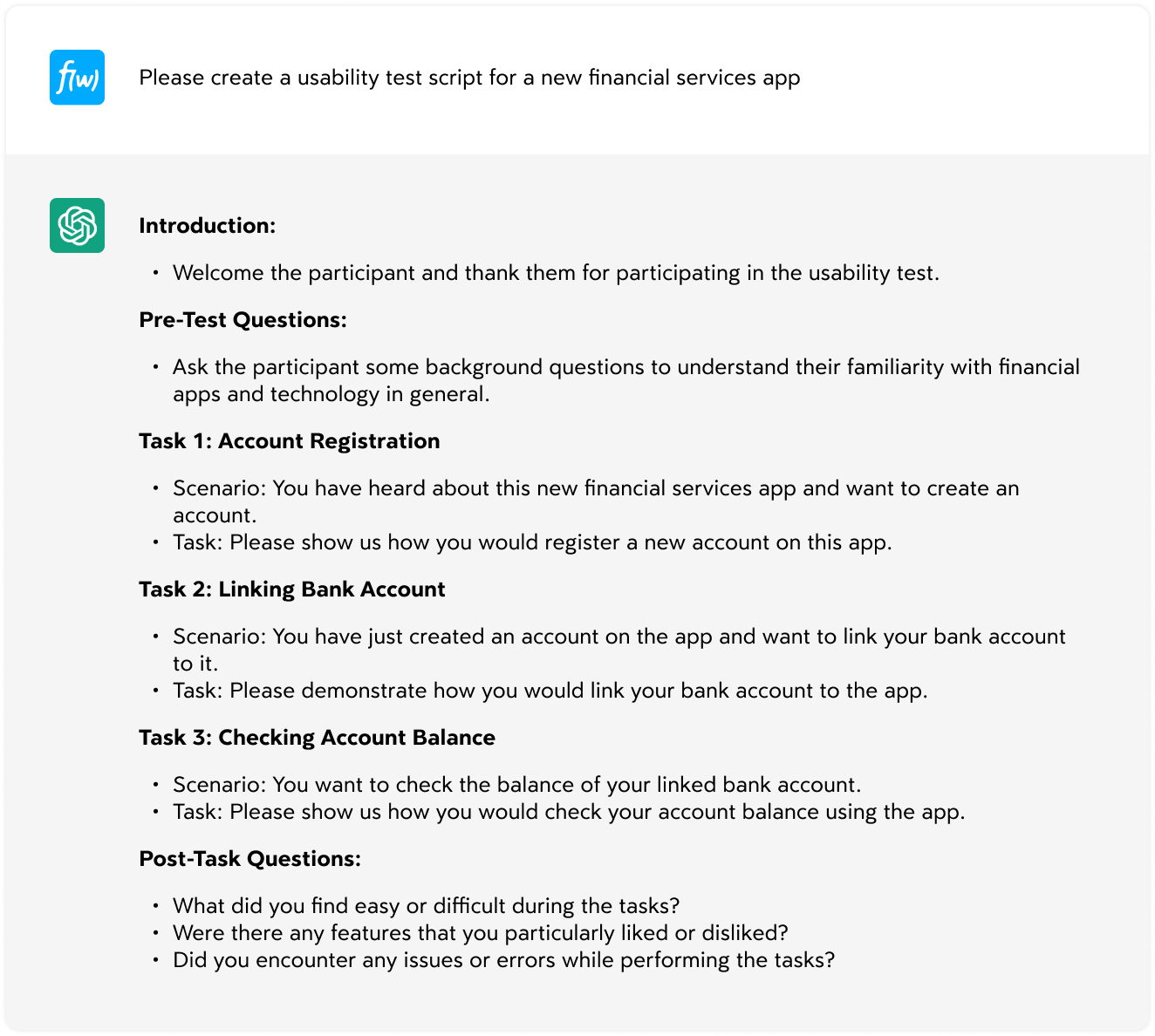
As you glance at the screenshot above, the response looks detailed and close to the result you are interested in. Upon closer inspection, you’ll notice it’s very broad and lacks context. The test tasks don’t necessarily cover features of MoneyMate. To get a better result, give ChatGPT a role to play and provide more context.
2. Provide ChatGPT with context and use role play.
Here's where things get interesting. ChatGPT is a born performer. It can slip into any role you assign it. Give it some context, set the stage and let it unleash its dramatic prowess. Use words or phrases like “assume” or “act as” to give ChatGPT the context it needs to provide you with a more powerful result.
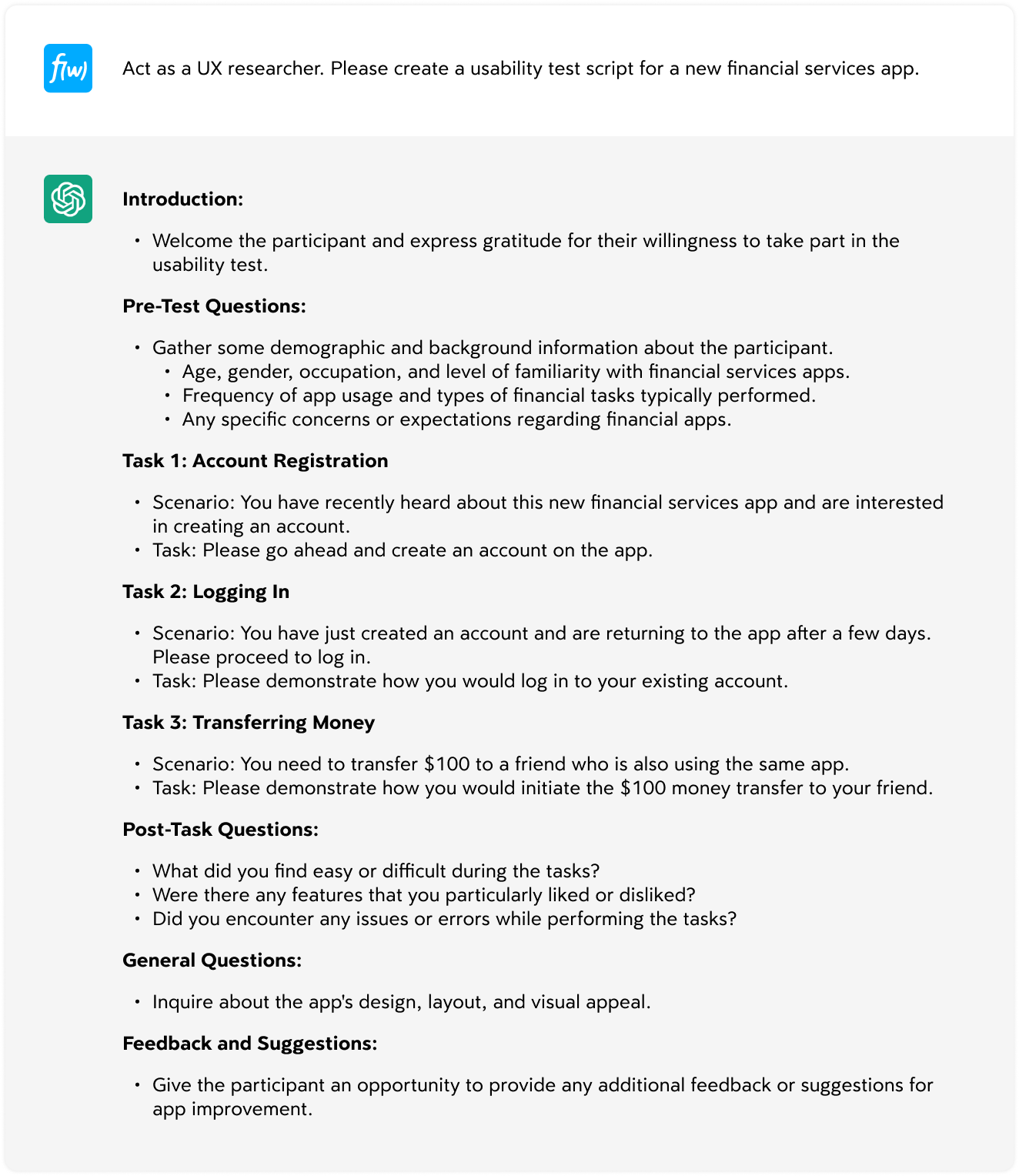
Though the result in the screenshot above is more specific, it still has many gaps and makes assumptions about MoneyMate’s features. What the script lacks is the expertise only a real UX researcher can provide.
3. Share your UX expertise and set parameters.
Don't forget who the expert is. You know the methodology, the target audience and all those nitty-gritty details that make your research top-notch. Share your wisdom with ChatGPT. Set the parameters, give it the guidelines and watch as it incorporates specific details into its responses.
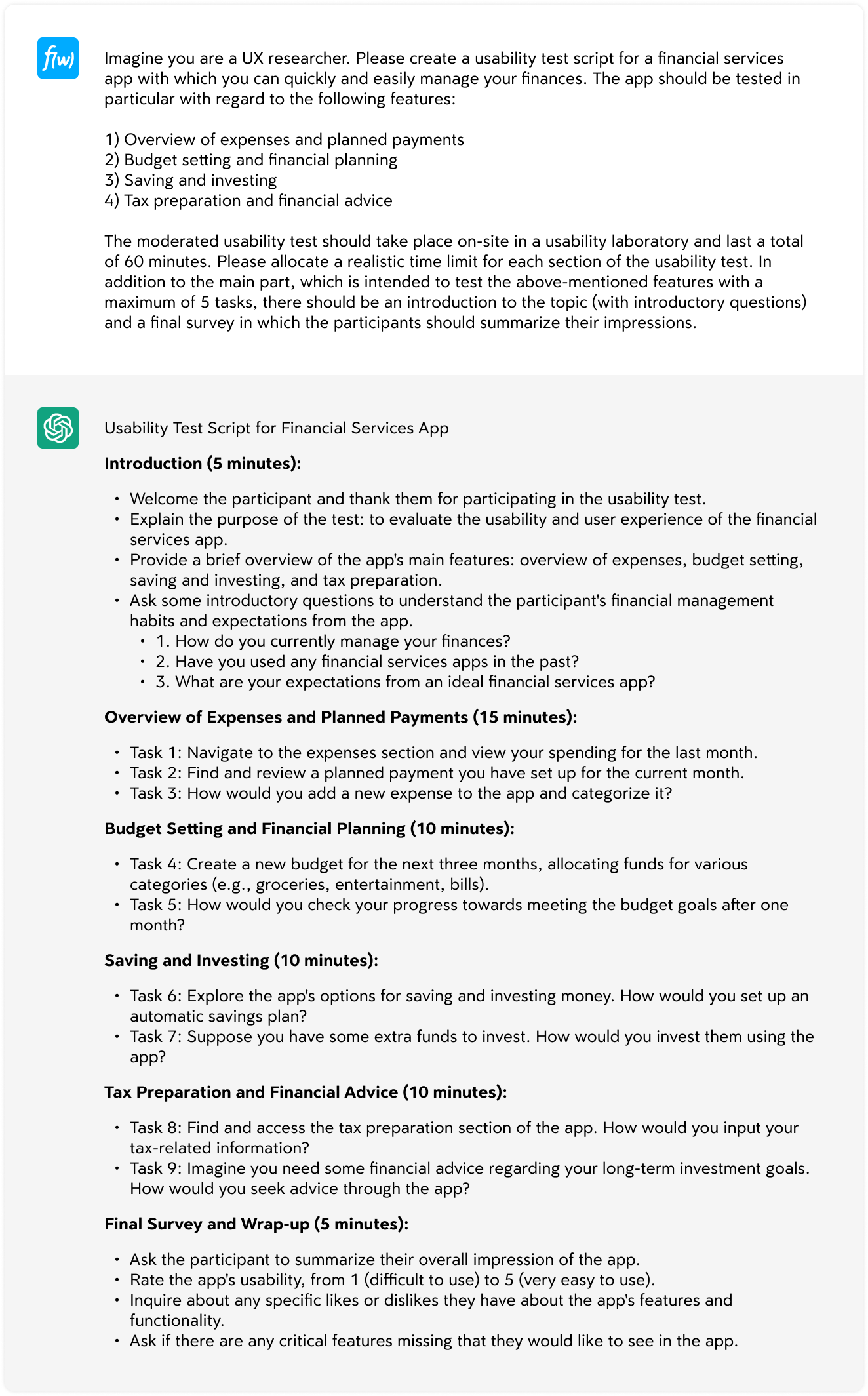
In the third screenshot, you see a much more detailed response and the tasks are relevant to the features of the app. It’s not a perfect final test script, but it’s a good starting point for to you add nuance to and fine-tune. Though ChatGPT may have saved you time, you should still review the response. Question whether the time allocation is appropriate and whether the tasks are detailed enough for users to understand.
4. Make use of ChatGPT’s memory.
Now that you’ve put in the effort to create a detailed prompt, you can leverage it for other tasks because ChatGPT remembers your conversation if you ask it to. For example, you can say “based on the above” and then add a new task to get a result that considers the full context of your interactions (screenshot example below).
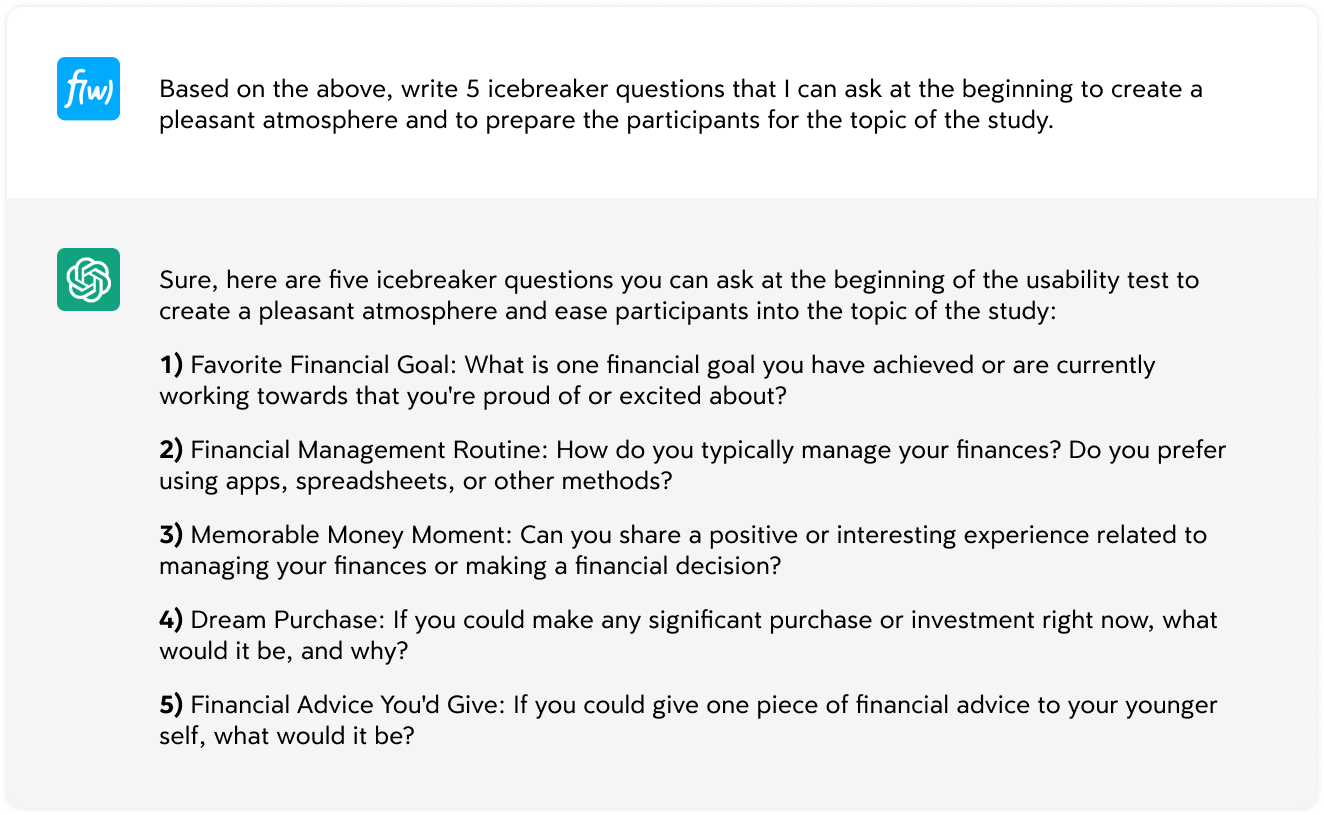
Remember, ChatGPT is not infallible and can reproduce errors. Always review responses with a discerning eye. You're the expert and critical thinking is what separates the humans from the AI.
ChatGPT and user experience research
ChatGPT’s core function in UX research should be to streamline processes. An expert will always be required to first prompt the AI for a response and their expertise is needed to challenge the output, refine it and plug into some tasks in a useful way.
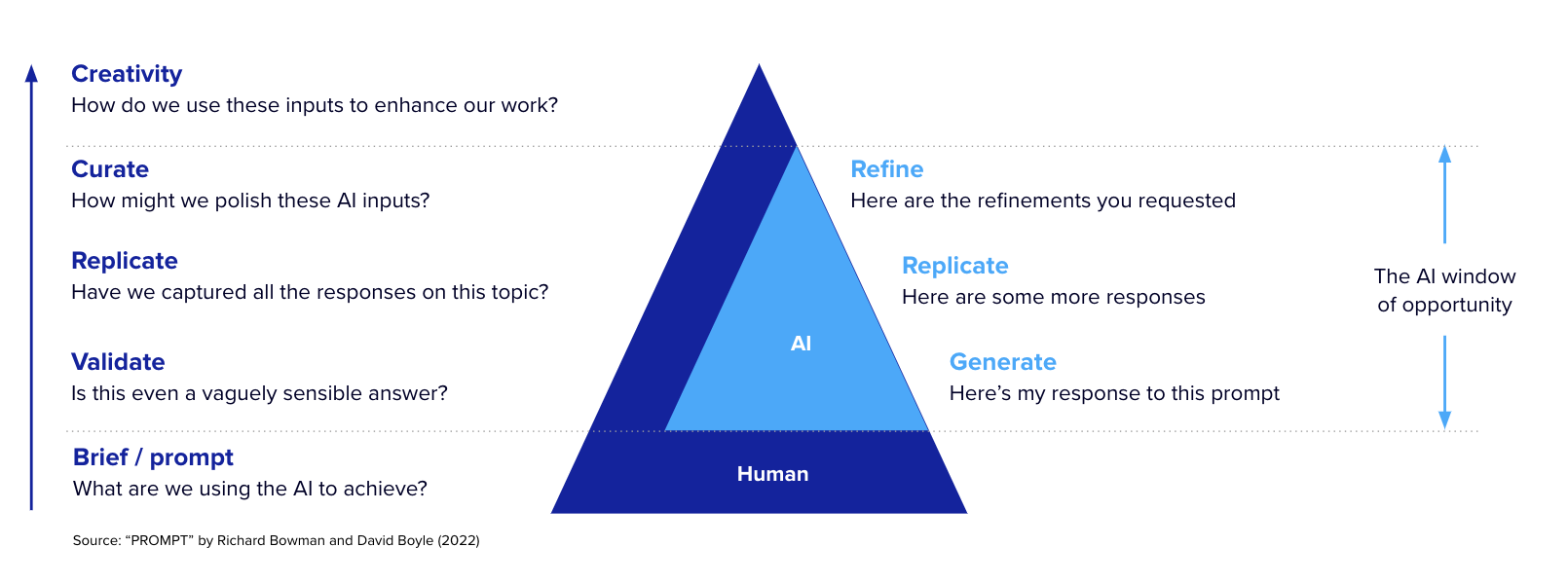
Remember, ChatGPT isn't a one-size-fits-all solution for all your UX tasks. Use it wisely, make a list of the tasks where ChatGPT shines and build prompts specifically tailored to those tasks.
Here are seven UX research tasks ChatGPT can be used for:
- Assistance with guide creation, including formulating questions and brainstorming topics.
- Summarizing notes and transcripts.
- Researching a competitor, its differences and unique selling positions.
- Inspiration for journey steps.
- Refinement of user stories.
- Help with designing the structure of questionnaires and formulating questions.
- Support in the creation of usability test scripts.
To save even more time, store proven prompts in a document and sort them according to the various tasks. This will allow you and your team to easily refer to them when doing similar tasks.
